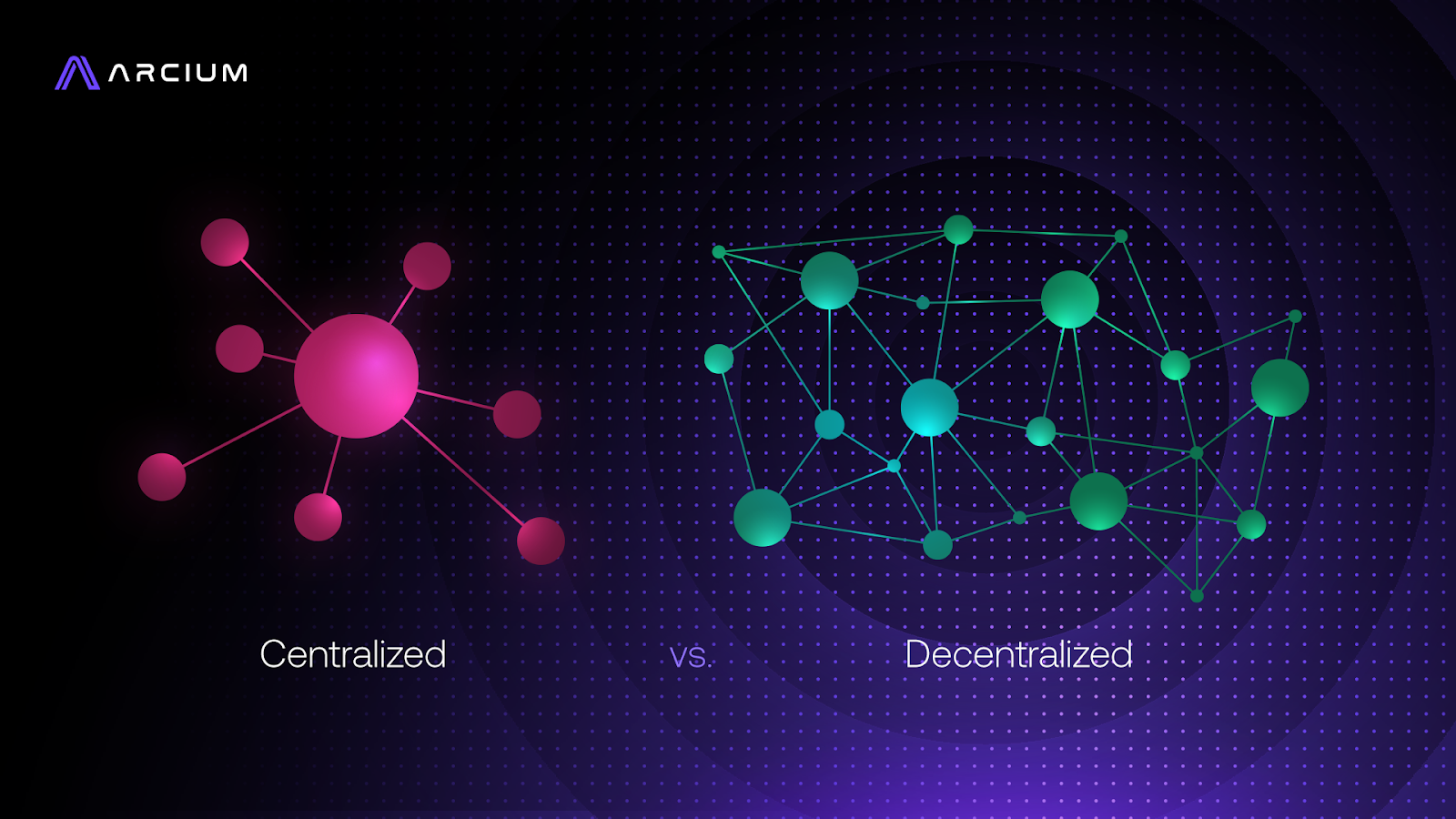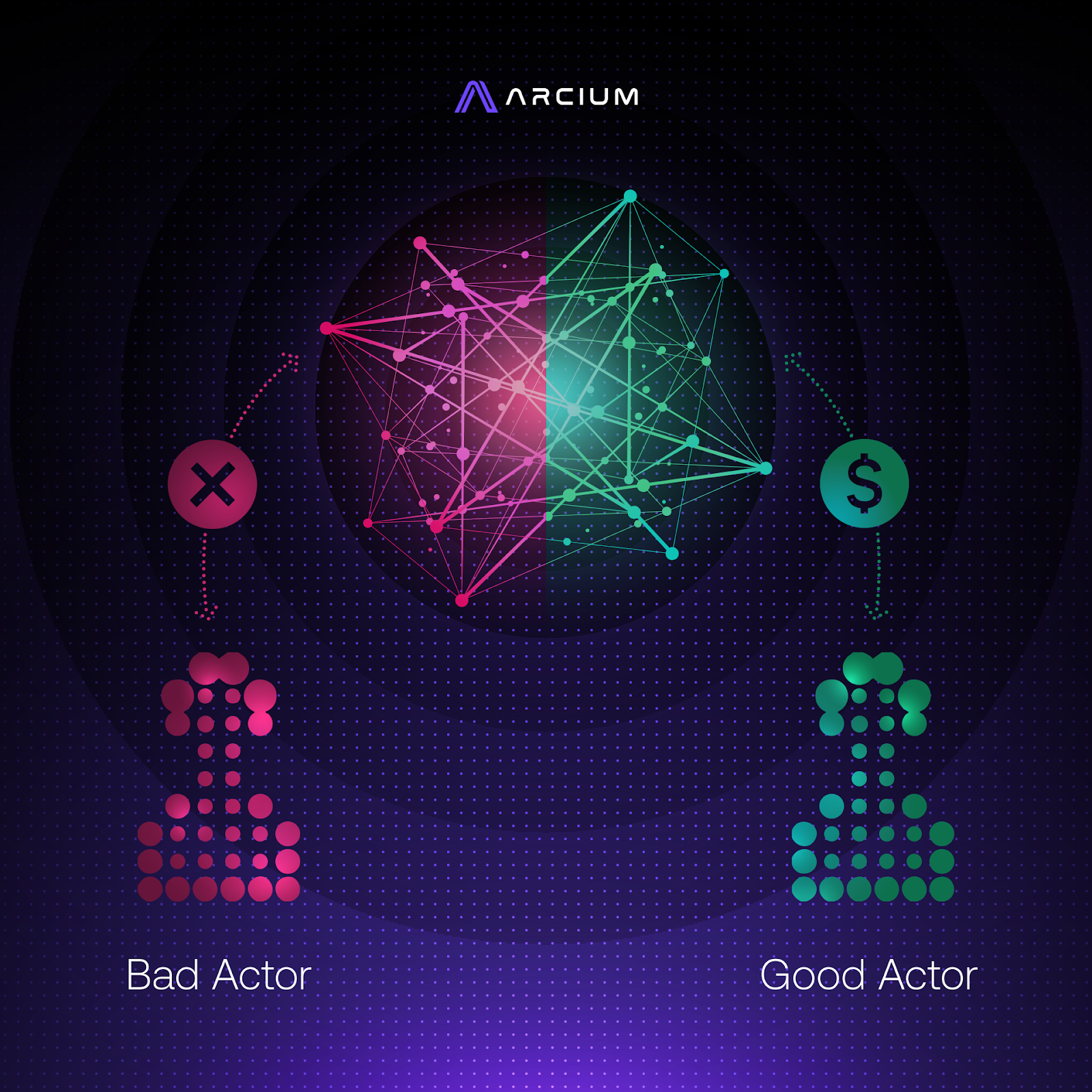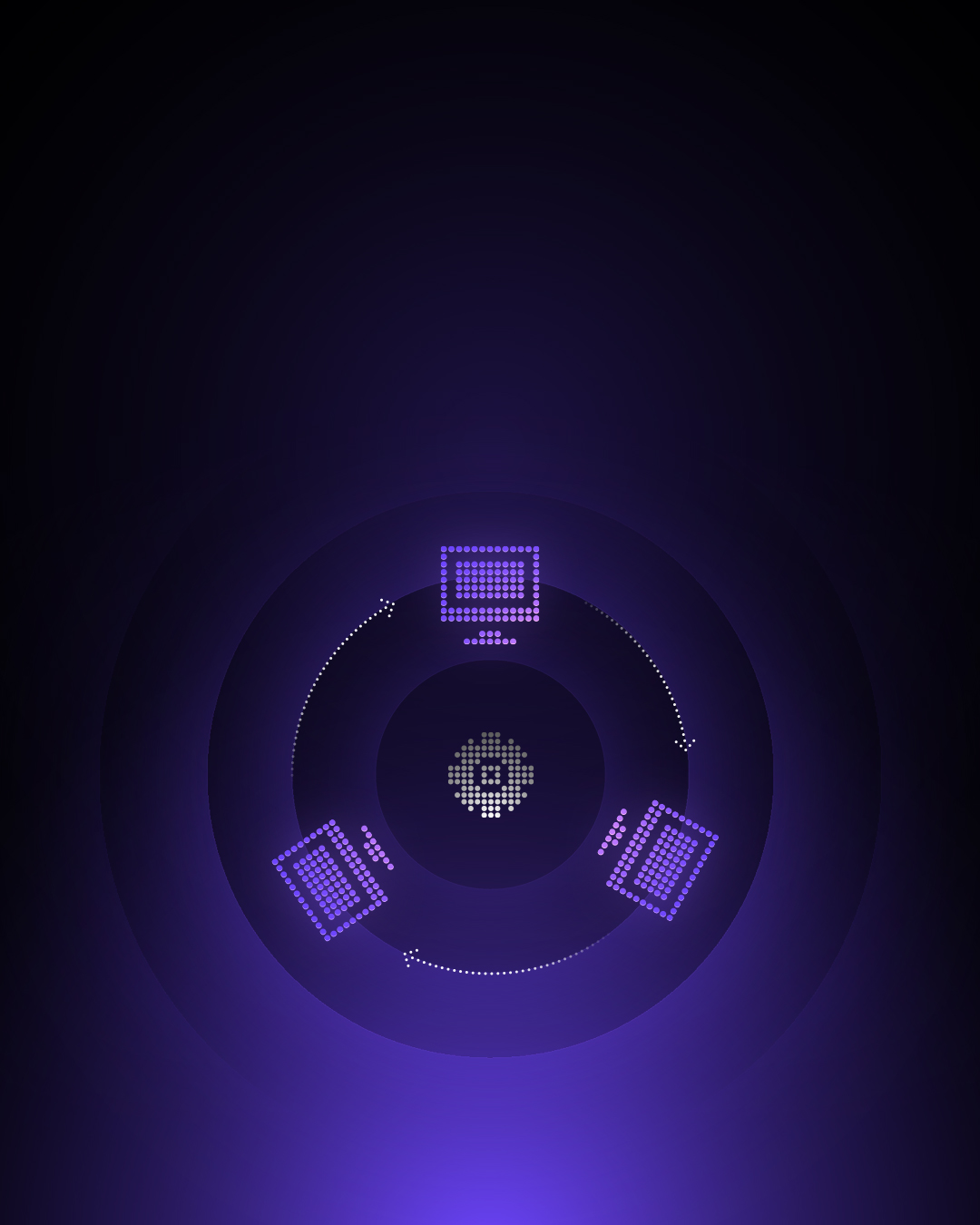.png)
Why does Arcium run on Solana?
Arcium isn’t a blockchain. It’s a standalone encrypted computation network.
But it uses blockchains like Solana to handle all network orchestration. Smart contracts manage the on-chain mempool, computation ordering, token staking and slashing, reward distribution, and coordination of Arx Node Clusters. By leveraging Solana as its organizational backbone, Arcium offloads state and consensus management to the blockchain—allowing the compute network itself to focus purely on encrypted execution.
Arcium uses Solana as its consensus layer and can plug into various existing blockchains as needed. This design offers major advantages over operating without blockchain infrastructure.
In this article, we’ll break down the advantages Arcium achieves by using Solana as its consensus layer.
Why Arcium uses a blockchain—but not its own.
Blockchains solve some of the hardest problems in decentralized systems: aligning incentives and orchestrating coordination at scale.
By using blockchains like Solana, Arcium ensures:
1. Decentralization and Permissionlessness
Anyone can participate freely — no gatekeepers, no central control.
2. Incentivized Honesty, Penalized Dishonesty
Participants are rewarded for honest behavior and punished for malicious actions via staking and slashing — enforcing security through game theory.
3. Offloaded Consensus for Efficient Scaling
Arcium uses the blockchain to handle consensus and coordination, allowing compute nodes to focus on execution — not orchestration.
4. Inherent Interoperability
Arcium isn’t tied to any single chain—it can integrate with any blockchain for consensus and incentives, making encrypted compute execution portable across ecosystems.
Decentralization and Permissionlessness

Decentralizing the network removes reliance on a single provider. Instead of trusting one entity like Amazon, trust is placed in a distributed set of nodes—or even in your own hardware. This creates a trustless system where control is not concentrated, but distributed.
However, decentralization introduces a new challenge: you don’t always know who’s running the nodes. That’s why strong trust models are essential. We built Cerberus as a zero-trust architecture with the strongest security guarantees, designed to maintain confidentiality even when node operators try to act maliciously. You can read more on Cerberus here.
Making the network permissionless avoids the need for massive operational overhead like centralized data centers. Anyone can provide computing power, be rewarded for honest behavior, and be paid directly by users. The result is a self-sustaining system that runs independently, without relying on any centralized entity—and without the risk of being shut down.
Incentivized Honesty, Penalized Dishonesty

Academic approaches typically detect malicious behavior but lack enforcement mechanisms, a gap addressed in blockchain-based systems through staking and slashing to incentivize honesty and punish dishonesty.
In the absence of a blockchain, there would be no way for the Arcium network to punish malicious actors and reward honest actors. Without a game-theoretic model in a permissionless network, people would try to collude, because it would actually be profitable. Adding cryptoeconomic enforcement makes collusion economically irrational — the cost of attempting to collude outweighs the potential gain.
Offloaded Consensus for Efficient Scaling
By offloading consensus, ordering, and orchestration tasks to dedicated blockchains, the Arcium network can focus exclusively on computation, avoiding the performance bottlenecks that arise from coupling consensus and execution.
This separation enables full parallelization of compute, with Clusters of Arx Nodes acting as offchain workers while Solana handles onchain mempool collection, task assignment, and result settlement. The result is faster, more scalable encrypted computation—without compromising on decentralization or trustlessness.
Inherent Interoperability
Because Arcium relies on blockchain-based orchestration but not blockchain-based execution, it can integrate natively with any existing blockchain ecosystem. Solana is the first, but Arcium’s model is chain-agnostic by design. Its encrypted compute execution remains portable and independent, while coordination, staking, and incentives are handled by the chain. This approach makes it simple to expand Arcium’s network to other blockchains as needed.
Why Arcium Doesn’t Build Its Own Blockchain
Some networks try to build their own blockchain for compute coordination, but Arcium made a different design choice—and it’s not just about efficiency.
Bootstrapping a new chain comes with security trade-offs. In the early stages, validator sets are small, staking is shallow, and economic security is easier to compromise. Attack surfaces are larger because there’s not yet enough value at stake to deter malicious behavior.
By integrating with existing networks like Solana (and other mature chains as the ecosystem evolves), Arcium bypasses the cold start problem. Solana already secures billions of dollars through a globally distributed validator network with mature staking and slashing mechanics. Arcium effectively borrows this cryptoeconomic security to enforce honesty and punish misbehavior from day one.
This lets Arcium stay focused on encrypted computation—while using existing blockchain infrastructure to handle incentives and trust, more safely and robustly than a new chain could.
Conclusion
Arcium doesn’t need to be a blockchain to benefit from one. By leveraging Solana as a consensus and coordination layer, Arcium inherits the strengths of blockchain infrastructure: decentralization, permissionlessness, and cryptoeconomic security—without the execution overhead.
But this isn’t just about efficiency, but about security.
Launching a new chain would have meant starting from zero: bootstrapping validators, staking, and liquidity from scratch. By building on top of Solana, Arcium taps into battle-tested, high-value economic security immediately, reducing risk while accelerating adoption.
Thanks to this design, the network can operate autonomously, without central infrastructure, external funding, or ongoing oversight. As long as there’s demand for encrypted compute and contributors are rewarded, the Arcium network sustains itself.
Rather than reinventing the wheel, Arcium integrates with proven blockchain primitives to solve core challenges: who to trust, how to coordinate, and how to enforce honest behavior at scale. The result is a robust and resilient network architecture that unlocks a new era of encrypted, decentralized computation—powered by the incentives and security that only established blockchains can provide.
Read more about how Arcium works in our technical docs: https://docs.arcium.com/
.svg)










.svg)




.svg)
























.jpg)





.jpg)

